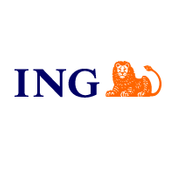ING Make Innovation "Business as Usual"
To truly unleash an organisation’s full innovation potential, everyone needs to be involved. ING has the Innovation Lab focussing on creating propositions beyond traditional banking products by incubating and accelerating homegrown B2B startups. To bring everyone on the innovation journey, Suzanne Charlotte Vos focussed more on making innovation “business as usual” and spread the innovation mindset and ways of working to the rest of the company. She joined forces with Aga Gajownik, Agile Coach and Social Entrepreneur, to create and implement the strategy around running innovation projects across the organisation. Aga brought her experience in agile methodologies, programme development and experiential learning.
Key points and challenges:
The existing innovation methodologies were developed for creating startups in a highly uncertain environment with a dedicated team. Innovating in business units is different. The main challenge encountered here was to translate the innovation approach from the Lab to the rest of the organisation, ensuring broad adoption of innovation practices and mindset.
As Suzanne explains: “Innovation is often perceived as something intangible, which makes it difficult to communicate impact. To most people innovation is also something that has to be big and disruptive, making it far removed from their day to day work. As a result, the key to broad adoption is making innovation relevant and actionable for everyone in the organisation.
Making innovation “business as usual”
Creating a strategy based on vague objectives is challenging. An agile approach can really help in the process of making it happen. In order to develop a sustainable strategy in collaboration with relevant stakeholders, the following steps were taken:
- Scoping/Research: Talk to all stakeholders, senior management and employees, to understand the pain points, in this case what is hindering them from starting innovation projects.
- Set up a hypothesis based on the feedback: In this case the main assumptions were
- people don’t know how to apply innovation practices in a way relevant for them, and
- a lack of clear targets around innovation blocks people from starting projects.
- Test the hypothesis on a small group: Train innovators and early adopters on the PACE methodology and new tools to show them how innovation works in practice and how they can incorporate innovation into their targets. In case this is successful and resonates with them, others get engaged notably through word-of-mouth.
- Incremental application based on research: Test and redesign solutions based on feedback. Here are a few examples:
Community building: Step one was to identify employees interested in building awareness around innovation activities at the organisation. Working with them led to increasing numbers of people participating in training sessions, taking on innovation challenges, and sharing ideas that could be activated. One of those ideas was the creation of Innotainment sessions, weekly 45min lunch time meet-ups where everyone could ask questions and connect on various topics related to innovation. The purpose was to create moments of serendipity, and keep the communication open to understand the pain points and the gains that innovation could bring employees.
Training: The feedback helped transitioning from offline PACE fundamentals training into a virtual 1-day mini hackathon using Scrum Educational Experience’s model. By upskilling proactive employees to innovation trainers the training became more engaging and available to everyone with the backdrop of a challenging environment.
Internal innovation sourcing: Give employees the tools needed to research problems they encounter on a daily basis and encourage them to brainstorm solutions that could be developed within the company and benefit them.
An agile approach can really help in scoping projects with vague objectives and refining results through continuous iteration
Tools and practices used:
When developing new programmes and initiatives, it is important to tap into existing resources to ensure it’s a collective effort. The PACE methodology is ING’s way to innovate. PACE is a combination of Design Thinking, Agile Scrum and Lean Startup. The methodology is at the core of all activities: Design Thinking helps with understanding for who what problem needs to be solved, Lean Startup drives continuous testing to ensure you start small and are going in the right direction, and Scrum is the engine that sets the cadence and keeps the project going.
After establishing a strong base it is crucial to research any additional resources that can help. In this case diving deeper into Agile Practices as well as using Scrum Educational Experience method for learning helped in enhancing the process of implementation and engagement in a virtual environment.
Furthermore, in order to address identified pain points of employees, Suzanne created two specific solutions: a List of Innovation Menu Items and a Measurability Grid. The Innovation Menu Items were examples of very concrete tasks employees could pick up to get started on innovation. Based on their “appetite” they could put one or more of these items in their targets. The Measurability Grid introduces a way to review progress made on innovation related targets as traditional metrics (e.g. ROI, revenue) don’t capture how well an innovation related activity is going.
Benefits coming from using agile approach:
- Focus on continuous interaction and collaboration with customers helps understand key blockers and come up with solutions relevant for them, which speeds up the adoption rate of innovation practices.
- Constant iteration and experimentation allow for fast adaptation to change and increase the success rate.
- Agile teaches how to prioritize and get things done, one task at a time. Employees learn how to be realistic about the workload they can manage. Moreover, it helps them keep focus and decrease their stress level.
- The agile approach derisks a project, notably thanks to the data collected. The implementation of small incremental steps needs only a small budget and makes it possible to correct things faster and be on the right track. Risk minimisation in a project is an excellent way to increase the adoption rate of innovation practices.
Continuous interaction and collaboration with customers help understand key blockers and come up with solutions relevant for them
The adoption and implementation of innovation is always an ongoing process
Results:
Thanks to enthusiastic innovators and early adopters sharing about the benefits of PACE, new followers were eager to be introduced to this methodology. ING Singapore is now at the point where a lot of momentum is built up and the early majority is starting to get on the innovation train. The adoption and implementation of innovation is always an ongoing journey.
Resources/Links
www.femaletechleaders.com/post/measuring-innovation-and-how-you-can-do-it-too
www.scrumeducationalexperience.com


